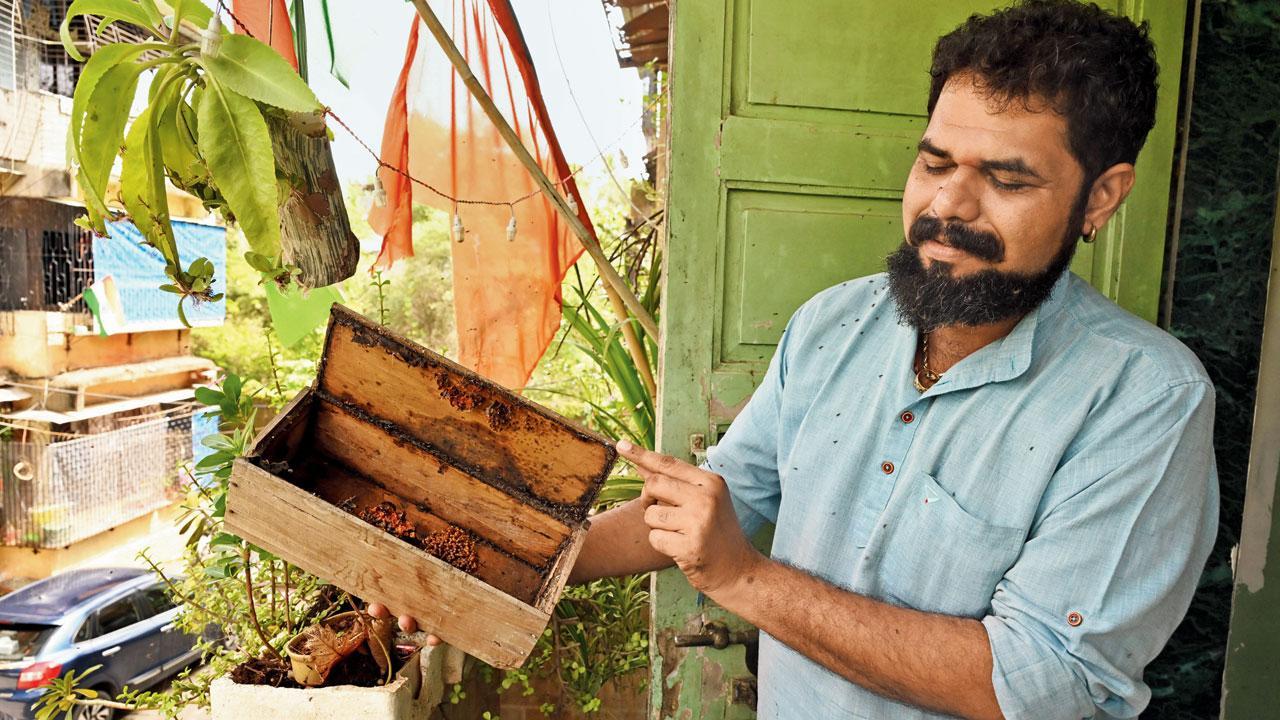Home / Sunday-mid-day / / Article /
Your guide to beekeeping in Mumbai
Updated On: 25 August, 2024 09:29 AM IST | Mumbai | Anand Singh
One in three bites of your food comes from bees. Learn how to become a home-based beekeeper with guidance from this Thane-based master apiarist

Apiarist Tare Shree shows a beekeeping box with stingless bees in Thane. Pics/Anurag Ahire
Did you know that you can be a professional bee rescuer? Yes, that’s actually a job; ask Thane’s Tare Shree Sugandha Chandrakant. The former Tata Consultancy Services employee discovered this passion while overseeing a beekeeping project in Murbad for the Paryavaran Dakshata Mandal—an environmental awareness NGO. With a background in Physics and a Master’s in Biodiversity and Wildlife Conservation, Tare is now a nature educator at Golden Spiral School in Dadar, and a professional bee rescuer.
He also teaches beekeeping in Thane. “Beekeeping in a city requires planning and patience,” says Tare. “Urban areas can be surprisingly suitable for beekeeping on a small scale if there is sufficient access to plants and flowers around. Greenery is a basic requirement so that bees can get their food from plant nectar.” The closer the food source, the less effort the worker bees need to put into producing honey.




